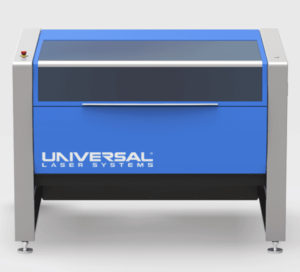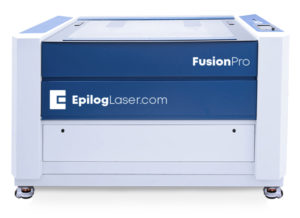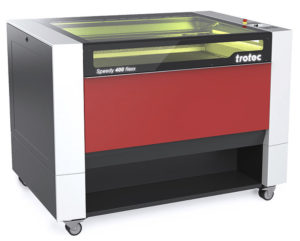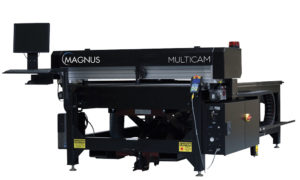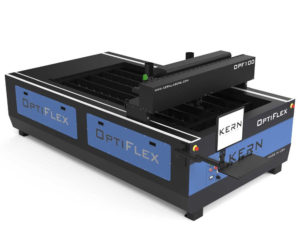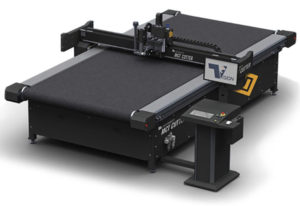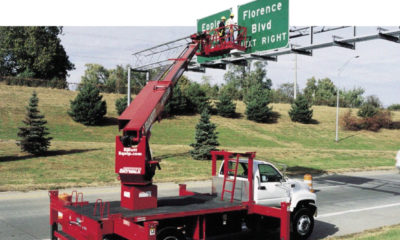IF WE SAY GOLDEN arches, what do you think? Probably McDonald’s. Goofy 10-gallon cowboy hat and you think Arby’s (or Pharrell Williams). The point is that you do not have to see a lettered sign in order to recognize the business. Many customers are doing the same thing with their identity. They want signs, plaques, name tags and other products that embody their brand’s unique shape. So how do you do that with off-the-shelf supplies that are usually square or rectangular? Face it, you’ve got some cutting to do.
In skilled hands a band saw, jigsaw or scroll saw can sometimes do the trick. This may be fine for one-offs, but what if you get a large order? Can your fabricator keep up? In these cases, most shops have used CNC routers that can produce fairly precise and repeatable parts more quickly. However, there can be some issues. Because a CNC router’s cutter must touch the material, you can encounter challenges with part sizes and in many cases the edges may need finishing. The material also takes a toll on the cutting tools like router bits.
When it comes to alternatives, plasma and water jets can easily cut materials, but are not ideal for many of the substrates used to make signs. That leaves our good friend, the laser. Lasers solve a number of issues found with the other technologies. The beam width is significantly more narrow than the diameter of a router bit, so precise parts with tight angles can be cut with ease. In addition, the cut edges of the piece will turn out smooth with little to no finishing required.
Virtually every material that can be cut on a CNC router can be cut with a laser. There are some materials to avoid such as PVC or carbon fiber, but High-Density Urethane (HDU), typically used for sign foams, cuts just fine. Some delicate materials like thin wood and plastic can be chewed up by a CNC router, while a laser cutter will handle it with precision.
Advertisement
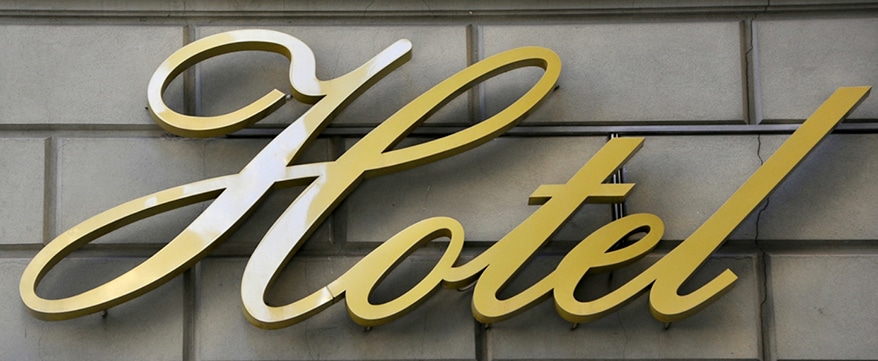
When you need clean edges or highly precise cutting due to tight angles, call on a laser solution.
So what are the downsides to laser cutting vs. CNC routing? The CNC router can produce a variety of 3D-relief effects that just can’t be duplicated with a laser (no Z axis on laser cutter). While laser cutters excel with thin materials (.5 in. or thinner), they will slow considerably as the thickness increases. CNC routers typically rely on the bit length and spindle power to push through such substrates.
Of course the working table area is a major consideration to be aware of, as well. Do you plan to work on a few smaller pieces at a time or do you want to gang a bunch of them in a single run? Do you need to create large pieces? Table sizes can range from 1.5 x 1 ft. in desktop engraver/cutters and up to 6 x 11 ft. for flatbed machines.
Now we come to a major decision: How much power do you need? This is typically dictated by the hardest materials you envision cutting. A lower-powered machine, typically using a 20- to 50W CO2 laser, can easily handle plastics and wood. At the higher ends of the power range you may even be able to through-cut soft metals.
If you expect to cut a variety of materials up to and including stainless steel, then you need to opt for higher power levels in the 300-plus-watt range. While many of these machines will still use CO2 lasers, some will instead have fiber lasers — which use a fiber optic to direct the beam. Fiber lasers are more robust and can cut faster than CO2 lasers. It’s worth noting that the finish and quality of the cut is higher with CO2 lasers. Some machines offer a hybrid system that includes both a fiber and CO2 laser that are either user-selectable or combined to increase the power. You can also find machines with dual-CO2 lasers that can be used independently or together, depending on the material being processed.
Laser cutters offer an interesting alternative to CNC routers if you understand the limitations. They are faster, cleaner (fumes, not dust) and more precise than a CNC router. We thought that by now, someone would marry a router and a laser. While a few hobby solutions are out there, nothing like that from traditional CNC or laser manufacturers exists. You can find finishing machines that have optional laser add-ons designed to work with digital textiles. Their cuts are more precise with sealed edges. Hopefully, the market will someday introduce a true laser router that will offer the best of both systems.
PHOTO GALLERY (6 IMAGES)
Advertisement


 Tip Sheet1 week ago
Tip Sheet1 week ago
 Photo Gallery3 days ago
Photo Gallery3 days ago
 Ask Signs of the Times5 days ago
Ask Signs of the Times5 days ago
 Real Deal2 weeks ago
Real Deal2 weeks ago
 Benchmarks1 week ago
Benchmarks1 week ago
 Photo Gallery6 hours ago
Photo Gallery6 hours ago
 Women in Signs2 weeks ago
Women in Signs2 weeks ago
 Women in Signs1 week ago
Women in Signs1 week ago

